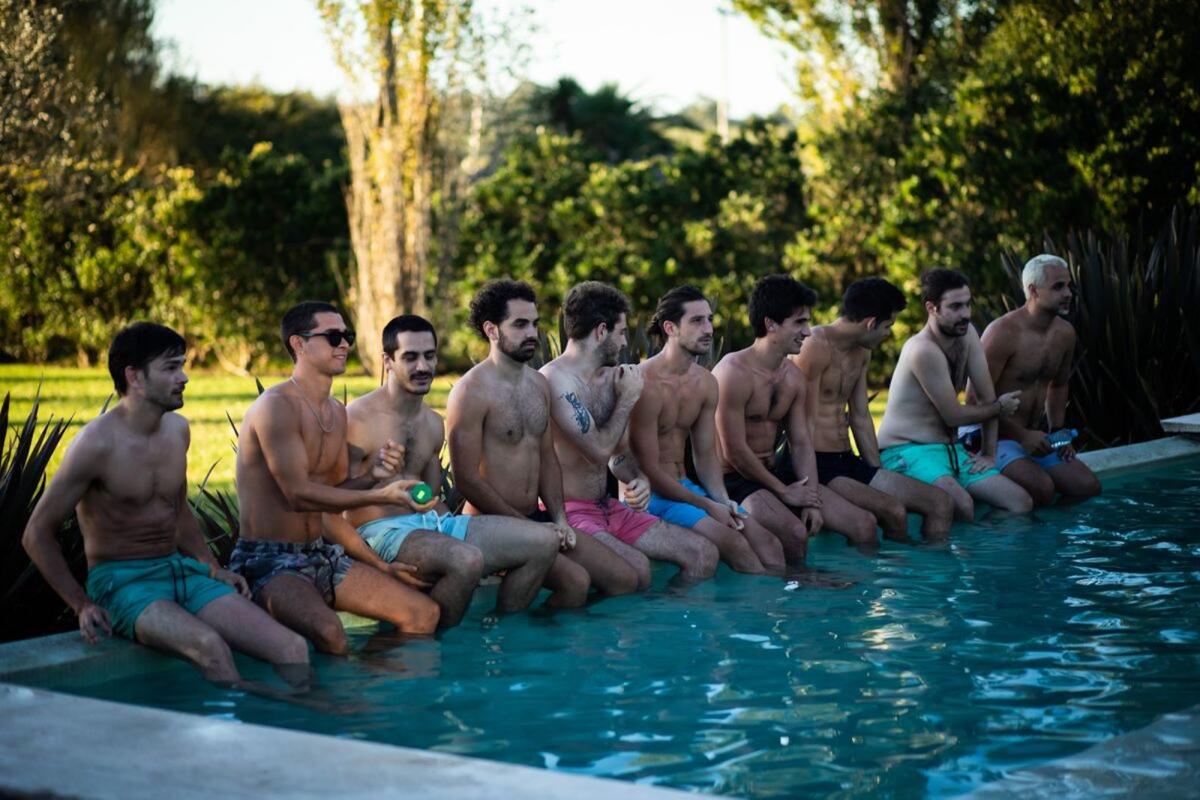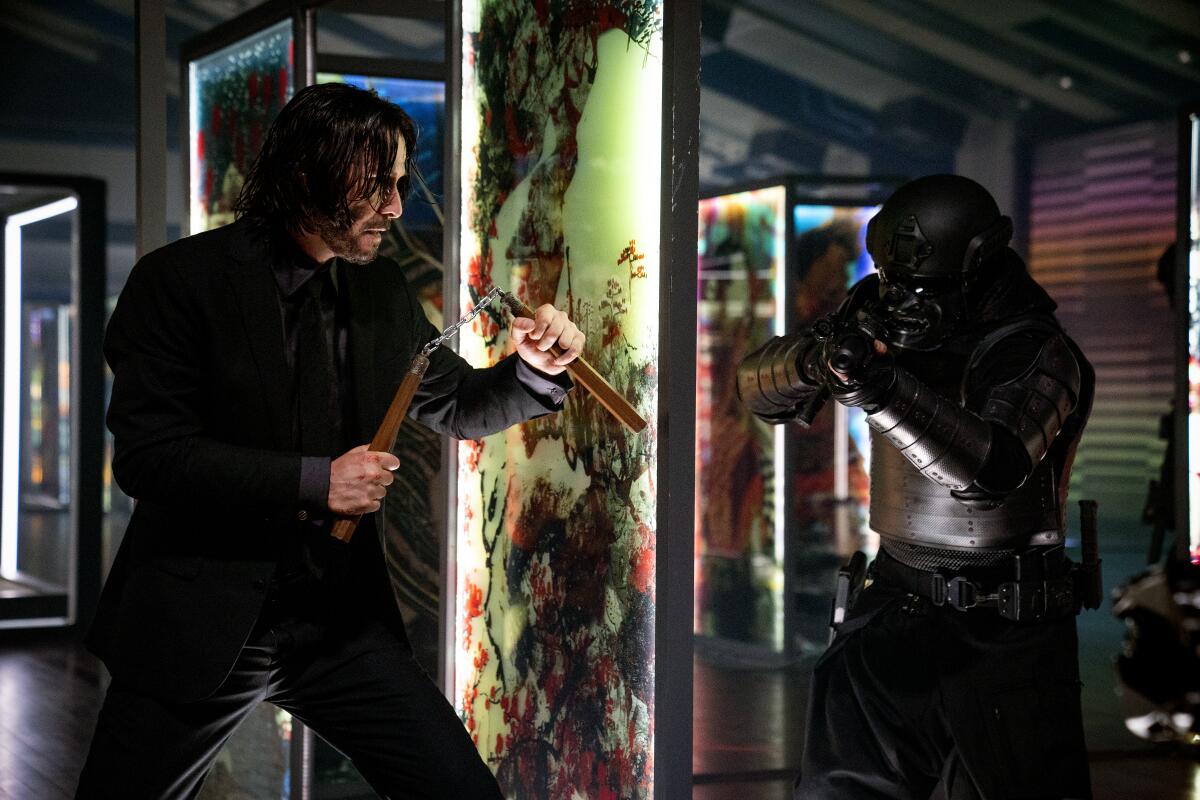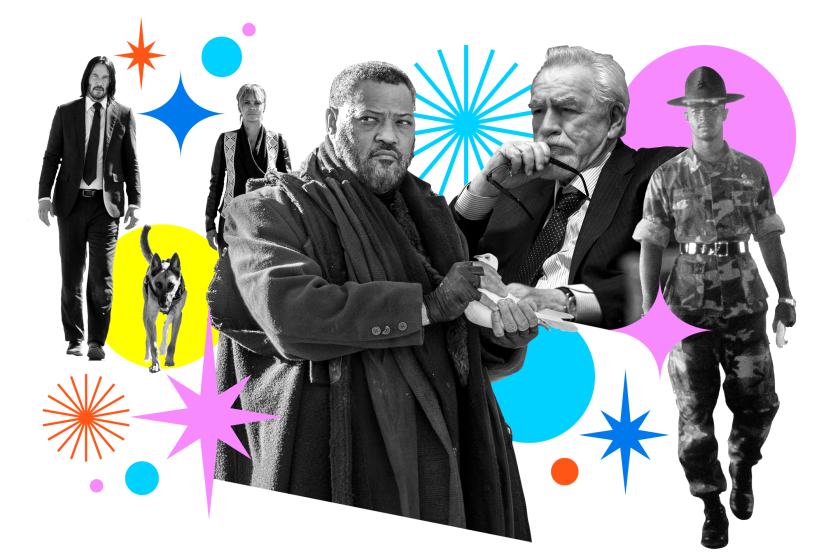Review: Boys will be boys engaging in erotic ‘Horseplay’

- Share via
‘Horseplay’
In Marco Berger’s homoerotic social satire “Horseplay,” a dozen buff Argentine dudes vacation together in a lovely villa, spending their days getting wasted, playing video games, arguing about action movies and pranking each other — usually while shirtless and occasionally while bottomless. Their favorite pastime is to take pictures of each other half-naked, posed to look they’re having sex. They think this is hilarious, because they are definitely not gay. No way. Not at all. Except maybe …?
There’s only one joke in “Horseplay,” repeated over and over: the joke of these guys making fun of homosexuality by play-acting queerness. But that’s OK, because this movie isn’t exactly a comedy. It’s more a series of thematically similar vignettes, only a few of which connect up into something resembling a story. There is some tension in the house, exacerbated by a few men secretly having non-pretend sex with each other. And later in the film, when a few girlfriends drop by, the rampant male nudity and unbidden groping starts to feel less like “goofing around” and more like criminal assault.
Some viewers may struggle with the elliptical qualities of “Horseplay,” and may find the movie’s shocking ending a bit abrupt. But anyone who has ever watched a certain type of guy up close — or who has been one of those guys — should recognize the truth in Berger’s keenly observed scenes of “ha ha” humiliation. This is a darkly astute study of how men in big groups can feel obliged to live up to the expectations of “boys will be boys” whether or not they actually enjoy it — and no matter where it may lead.
‘Horseplay.’ In Spanish with subtitles. Not rated. 1 hour, 42 minutes. Available on VOD
‘American Pain’
A hard-hitting hybrid of the true crime and “Florida Man” genres, Darren Foster’s documentary “American Pain” is equal parts entertaining and shocking, telling a story that explains a lot about how America’s opioid epidemic got so out of hand. It’s partly a film about shameless exploiters of human misery and partly about how a slack regulatory state — coupled with a culture that defaults to respecting the wealthy — allowed a wholesale drug-dealing operation to flourish out in the open.
“American Pain” is ostensibly about roguish Palm Beach twin brothers Chris and Jeff George, who discovered loopholes in the medical and pharmaceutical businesses that allowed them to sell prescription drugs to anyone who could pay for them, regardless of whether their “patients” had a proper diagnosis. The Georges started with steroids then moved on to pain meds, opening clinics across Florida that processed hundreds of customers a day, handing out pills on-site and relying on bogus tests and exams as a quasi-legal justification.
Some of Foster’s interview subjects criticize the drug-makers for pumping out as much supply as possible to meet demand, without questioning if anything shady was going on. But for the most part this isn’t really an “issue doc.” Any points “American Pain” makes are embedded within a familiarly rollicking underworld narrative — akin to an old gangster picture — in which large sums of money and heavy quantities of intoxicants attract scores of awful people and provoke increasingly terrible behavior. The cold irony that Foster provocatively presents is that if the idiocy surrounding pain clinics hadn’t become too gross and widespread for the authorities to ignore, people like the Georges might still be getting rich off of addiction today.
‘American Pain.’ TV-MA, for sexual situations, coarse language. 1 hour, 46 minutes. Available on Max
More and more free, ad-supported streamers are joining the fray to keep your costs down and your movie and TV watching high. Here’s what to know.
‘Hi-Fear’
The horror anthology “Hi-Fear” is the third in a series, following 2013’s “Hi-8” and 2018’s “Hi-Death.” All three films exemplify and pay tribute to the kind of unapologetically bloody and raunchy micro-budget splatter flicks that genre fans used to have to get from cult video stores or through mail order.
“Hi-Fear” has a bare-bones framing device, introducing a young comic book artist named Natalie (Kristin Lorenz), assigned to draw some of the scariest scenes she can imagine. Those illustrations fade into four stories: three nerds visit a demonic bordello; a creepy preacher meets a band of backwoods cannibalistic junkies; legends surround a scary-looking homeless man on a righteous mission; and a squabbling couple encounter supernatural weirdness in the wilderness.
The previous “Hi” movies packed more segments into shorter running times. By contrast, the “Hi-Fear” stories tend to drag on, testing the patience of all but the most hardcore horror buffs, who don’t mind thin plots and amateurish acting. It’s perhaps best to think of this film as a kind of cinematic habitat: a place to linger for a while if you have fond memories of watching DIY gore-fests shot on consumer-grade videotape.
‘Hi-Fear.’ Not rated. 1 hour, 52 minutes. Available on VOD

Available now on DVD and Blu-ray
“John Wick: Chapter 4” continues the saga of Keanu Reeves’ reluctant assassin, who in the smaller-scaled first film sought revenge on some low-level gangsters who pushed him too far, but who now in the fourth film finds himself traveling the world, trying to make peace with the powerful cabals who run the international gangs. The Blu-ray edition includes extensive behind-the-scenes featurettes, documenting the extraordinary effort and coordination that goes into executing this series’ astonishing stunts. Lionsgate
More to Read
Only good movies
Get the Indie Focus newsletter, Mark Olsen's weekly guide to the world of cinema.
You may occasionally receive promotional content from the Los Angeles Times.











